
4 Home Energy Retrofits that Pay for Themselves in One Year
Last Updated: Apr 9, 2025Updating to a completely zero-energy ready home, as recommended by the U.S. Department of Energy, might be an option for some homeowners. These tips for a low carbon retrofit are also worth considering if your monthly energy bills cut into your retirement savings. And, of course, putting a few solar panels on your roof is a fantastic way to reduce your carbon footprint.
But what about those homeowners who are genuinely interested in living more sustainably but do not have the economic freedom to invest in upgrades to a home that is more environmentally friendly? Below, we review four of the top home energy retrofits that can immediately impact the environment. The reduced price tag on these home renovation tips allows them to pay for themselves within one year.
Table of Contents
- Water Heaters
- Low Flow Showerheads
- Smart Thermostats
- LED Lighting

Water Heaters
Heating the water we use for taking showers, washing the clothes, and washing dishes is an enormous energy expenditure that most of us rarely take into consideration. Most homeowners take for granted that hot water will show up shortly after turning on the faucet. The energy required to keep an 80-gallon tank of water heated for on-demand use, however, can often require more yearly power than most other household functions.
A 4,000-watt tank-style electric water heater will most likely be running for about three hours each day to keep a steady supply of on-demand hot water. That amount will increase for households where each member enjoys their 20-minute hot shower each morning. Even if your water heater only runs for three hours each day, you are looking at 12 kWh of electricity per day. At an average cost of $0.12 per kWh, you can expect to spend upwards of $525 each year on hot water for 4,380 kWh of electricity.
Tankless, on-demand water heaters use a fraction of the energy of a tank heater. Most homeowners can expect to save around$95 per year, as per the estimates provided by the U.S. Energy Star Program. This tankless electric water heater promises savings of up to 60 percent on your hot water heating bill and is 99.8 percent efficient. It also only costs $219 and can efficiently heat up to 2 gallons of water per minute. When coupled with low-flow showerheads (the next item on our list), this efficient water heater could offer enough heating ability for most households.

Low Flow Showerheads
Tankless water heaters are most effective in households that take steps to reduce their water demand. According to one estimate by the Alliance for Water Efficiency, “in an average home, showers are typically the third largest water use after toilets and clothes washers. The average American shower uses 17.2 gallons (65.1 liters) and lasts for 8.2 minutes at an average flow rate of 2.1 gallons per minute (GPM) (7.9 LPM).”
In a four-person household where each member takes an average of one shower per day, 25,000 gallons of water will be required for yearly showering. The average price of water in the United States is incredibly inexpensive, at about $1.50 for 1,000 gallons. Homeowners, then, can expect to spend about $40 per year on water for their showering needs.
One of our favorite products at Rise is the Nebia Showerhead. This spa-style showerhead uses new technology to atomize individual droplets of water. Essentially, you end up bathing in a cloud of warm, misty water. Besides being ridiculously comforting, this showerhead uses us 0.75 gallons per minute (GPM), which is far less than the 2 GPM required by the EPA Water Sense-rated fixtures.
Based on our figures above, switching to a Nebia showerhead will cut your water costs by as much as two-thirds. The Nebia showerhead 2.0 currently costs $499. When you factor in the energy savings that accompany reduced water demand for showers, we expect a payback period of about two years. Of course, it is hard to put a price on luxury, and this product helps to dispel the myth that more sustainable homes are also more austere and less comfortable.

Smart Thermostats
The smart home revolution is here, and today you can find a “smart” technology for virtually every household need. Not all of these IoT technologies, however, represent significant energy savings, and in some cases, the increased energy demand from smart homes might actually increase overall energy usage.
Smart thermostats, on the other hand, are a great example of how technology can help to reduce overall household energy usage drastically. The U.S. Energy Information Administration (EIA) estimates that the average U.S. family spends about $1,411.80 a year on their energy bills.
Nearly half of that energy expenditure goes to heating and cooling loads, though that percentage can increase significantly in areas with intense summer heat or unbearable winter cold.
The 2nd generation Ecobee smart thermostat currently only costs $139 on Amazon, though it can drastically reduce your home heating and cooling requirements. This smart thermostat option claims that homeowners can save up to 23 percent annually on their heating or cooling costs when compared to a hold of 72 degrees on the interior temperature. If you spend the national average of around $700 on heating and cooling, upgrading to a smart thermostat could save you upwards of $150 per year, which is less than the cost of many smart thermostats on the market today.
Water Heaters
Shop water heater products that have been vetted for your health, wealth, and the planet.

Stiebel Eltron Accelera 300 E Heat Pump Water Heater
Stiebel Eltron
In Stock

Stiebel Eltron DHC-E 8/10-2 Plus Point-of-Use Electric Tankless Water Heater - 202145
Stiebel Eltron
In Stock

Stiebel Eltron Accelera 220 E Heat Pump Water Heater
Stiebel Eltron
In Stock
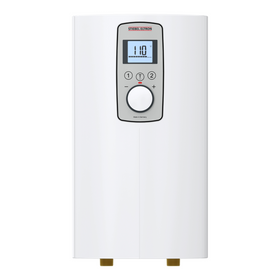
Stiebel Eltron DHC-E 3/3.5-1 Trend Point-of-Use Electric Tankless Water Heater - 200057
Stiebel Eltron
In Stock
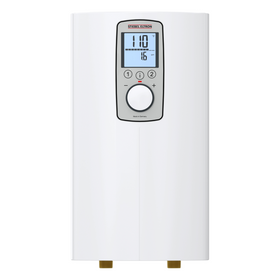
Stiebel Eltron DHC-E 12/15-2 Plus Point-of-Use Electric Tankless Water Heater - 200056
Stiebel Eltron
In Stock
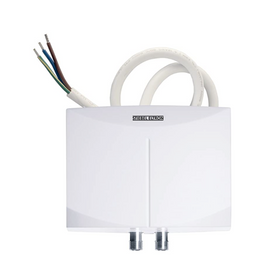
Stiebel Eltron Mini 2-1 Single Handwashing Sink Electric Tankless Water Heater
Stiebel Eltron
In Stock
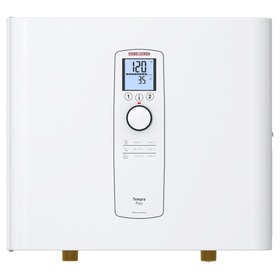
Stiebel Eltron Tempra 24 Whole House 24 kW 5 GPM Electric Tankless Water Heater
Stiebel Eltron
In Stock
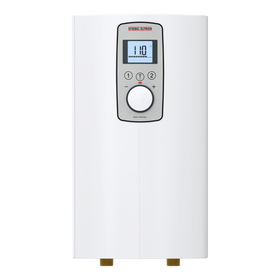
Stiebel Eltron DHC-E 8/10 - 2 Trend Point-of-Use Electric Tankless Water Heater - 200058
Stiebel Eltron
In Stock
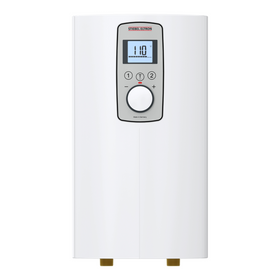
Stiebel Eltron DHC-E 4/6.2 - 2 Trend Point-of-Use Electric Tankless Water Heater - 200061
Stiebel Eltron
In Stock
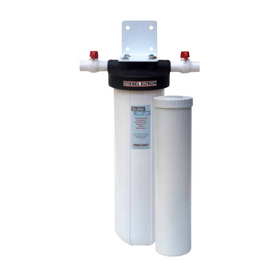
Stiebel Eltron Scale TAC-ler Cartridge
Stiebel Eltron
In Stock

LED Lighting
The way we light our homes can also have a significant impact on our total carbon footprint and our monthly electric bill. Lighting accounts for about 7-8 percent of overall household energy usage, with the average home having about 45 light bulbs. LED lighting technology is about 80 percent more efficient than fluorescent bulbs, and is gaining in cost competitiveness. One recent estimate finds that homeowners can expect to save about $8.33 per month by switching to all LED light fixtures, or about $100 per year. Today, it is possible to find
LED light bulbs for under $1 each, such as this 24-pack of 8.5-watt Sylvania LED light bulbs.
Changing out all 45 of your bulbs would you about $45, though you can expect an almost instant payback period, and will not have to worry about changing out another bulb for another decade.
Not every homeowner has the financial means to invest tens of thousands of dollars in deep energy retrofits. The energy retrofits outlined above can pay for themselves in under a year. Even if you are in a financial situation where your credit score resembled a typical MLB batting average, these no-nonsense energy retrofits are achievable for virtually every North-American homeowner.
Tobias Roberts
Tobias runs an agroecology farm and a natural building collective in the mountains of El Salvador. He specializes in earthen construction methods and uses permaculture design methods to integrate structures into the sustainability of the landscape.
